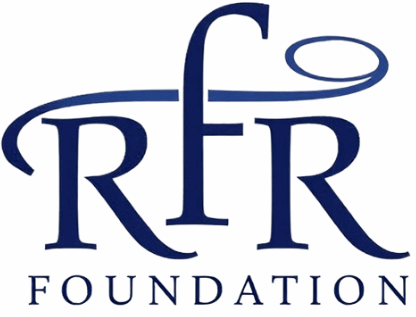Pursuing higher education can be financially challenging, but scholarships provide an excellent way to fund your studies without incurring debt. Finding and applying for scholarships may seem overwhelming due to the sheer number of options and requirements. However, with proper planning and strategy, you can identify scholarships that fit your profile and increase your chances of success. This guide offers a step-by-step approach to finding and applying for scholarships effectively.
Step 1: Understand Scholarship Types
Before starting your search, it is important to know the types of scholarships available:
- Merit-Based Scholarships: Awarded for academic, athletic, or artistic achievements.
- Need-Based Scholarships: Given to students who demonstrate financial need.
- Field-Specific Scholarships: Targeted at students pursuing specific subjects, such as engineering, medicine, or business.
- Minority & Diversity Scholarships: Aimed at underrepresented groups, including women, minorities, or international students.
- University-Specific Scholarships: Offered directly by colleges or universities for admitted students.
- Government & Foundation Scholarships: Funded by government programs or private foundations globally.
Tip: Understanding the type of scholarship helps you focus on opportunities that match your strengths and situation.
Step 2: Start Your Research Early
Starting early is critical for scholarship success:
- Timeline: Begin researching at least 12 months before you plan to start your studies.
- Resources: Use scholarship databases like Fastweb, Cappex, Scholarships.com, and government portals.
- University Websites: Many universities maintain updated lists of available scholarships.
- Networking: Ask teachers, mentors, and professionals about scholarship opportunities.
Tip: Create a spreadsheet to track scholarship names, deadlines, requirements, and application links.
Step 3: Check Eligibility Criteria
Each scholarship has specific requirements:
- Academic Performance: Minimum GPA or test scores.
- Field of Study: Some scholarships are restricted to certain majors.
- Demographics: Age, nationality, gender, or minority status may be required.
- Extracurricular Achievements: Leadership, volunteering, sports, or artistic involvement.
- Financial Need: Proof of income or family financial statements for need-based scholarships.
Tip: Apply only to scholarships where you meet the eligibility criteria to maximize your chances.
Step 4: Prepare Your Documents
Scholarship applications require organized documentation:
- Academic Transcripts – Official records of your academic performance.
- Standardized Test Scores – SAT, ACT, GRE, GMAT, TOEFL, or IELTS if required.
- Resume/CV – Highlight academic, extracurricular, and volunteer achievements.
- Recommendation Letters – From teachers, mentors, or employers.
- Personal Statement or Essay – Explaining your goals, motivation, and suitability for the scholarship.
- Financial Documents – For need-based scholarships, include proof of income or financial statements.
Tip: Keep all documents ready and formatted to save time during the application process.
Step 5: Write a Strong Scholarship Essay
The essay is often the most important part of your application:
- Tell Your Story: Share personal experiences, challenges, and achievements.
- Highlight Goals: Explain why you want to study your chosen field and how the scholarship will help.
- Show Alignment: Demonstrate how your values align with the scholarship organization.
- Proofread: Ensure there are no spelling or grammatical errors.
Tip: Customize each essay to the specific scholarship rather than using a generic one.
Step 6: Apply on Time
Timely submission is crucial:
- Follow Instructions: Submit all required documents as specified.
- Check Deadlines: Late submissions are almost always rejected.
- Keep Copies: Save copies of all applications and confirmations.
Tip: Applying early can sometimes give you a competitive edge.
Step 7: Follow Up and Stay Organized
After submission:
- Confirmation: Ensure the application was received.
- Additional Requests: Respond promptly if the organization requests extra documents.
- Track Status: Keep a record of scholarship outcomes and deadlines for future applications.
Tip: Even if you don’t win a scholarship, feedback can help improve future applications.
Overview Table
| Step | Action |
|---|---|
| Understand Scholarship Types | Identify merit-based, need-based, field-specific, or other types |
| Start Research Early | Use online databases, university websites, and networking |
| Check Eligibility Criteria | Verify GPA, field, demographics, and financial requirements |
| Prepare Documents | Gather transcripts, test scores, resume, recommendations, essays |
| Write Scholarship Essay | Tell your story, goals, and alignment with the scholarship |
| Apply on Time & Follow Up | Submit complete applications before deadlines and track status |
Conclusion
Finding and applying for scholarships requires research, planning, and organization. By understanding scholarship types, starting early, checking eligibility, preparing strong documentation, and submitting applications on time, students can maximize their chances of securing financial support. Following these steps systematically makes the scholarship process manageable and increases the likelihood of funding your education successfully.
Frequently Asked Questions (FAQs)
1. Can international students apply for scholarships in the USA?
Yes, many scholarships are specifically available for international students.
2. Are recommendation letters mandatory for all scholarships?
Not always; some scholarships require them while others focus on essays or achievements.
3. How many scholarships should I apply for?
It’s recommended to apply to multiple scholarships to increase your chances of receiving funding.
